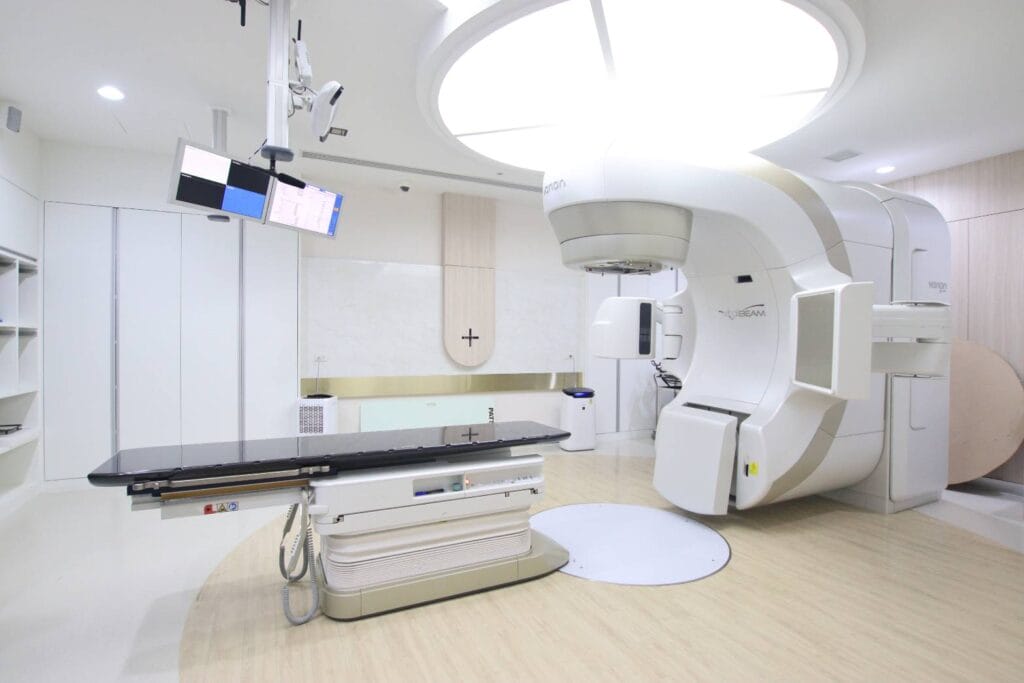Radiosurgery is a treatment method that delivers a high dose of X-ray radiation precisely to the target with accuracy. The purpose is to destroy the tumor or cancer. It is employed as a primary treatment when surgery is not feasible or as an adjuvant treatment following surgery. This approach can be utilized for the brain, spinal cord (SRS/SRT), and body areas (SBRT) such as the lungs and liver. Radiosurgery differs from general radiation therapy in that it involves delivering a higher dose of radiation per session, but the total number of radiation sessions is typically fewer. Furthermore, radiosurgery can limit the high dose of radiation to the specific area of the tumor or cancer, better than general radiation therapy.
Stereotactic Radiotherapy (SRT)
is a high-dose radiation therapy delivered in 3-7 sessions for tumors located in the head or spine. This approach aims to reduce side effects from single-session radiation therapy. However, it has limitations in requiring specialized equipment. It allows for precise positioning.
Stereotactic Body Radiation Therapy (SBRT)
Stereotactic Body Radiation Therapy (SBRT) is a high-dose radiation treatment for tumors located in the body, such as the lungs, liver, or lymph nodes. This approach involves delivering radiation in 3-7 sessions.












